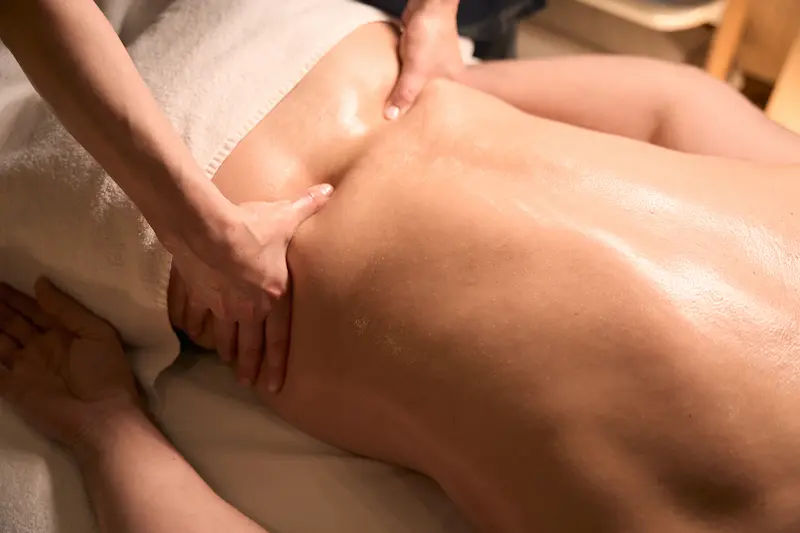How To Reduce Muscle Pain After Workout?
Ease post-workout muscle pain with these simple recovery tips! Learn how to reduce soreness with stretching, hydration, proper nutrition, and effective recovery techniques.

Written by
Last updated on 3rd Jul, 2025
The muscles are the soft tissues in the human body that help it to move. These are also essential to support the body's different organs, including the skeletal system. Poor muscular strength reflects an unhealthy body prone to diseases and fatigue. As such, exercising is recommended to build muscle and reduce fat. However, in some cases, muscle pain after workouts may cause discomfort, inability to continue with physical exercise, stress, and other serious issues if a person continues to exercise despite the pain.
Understanding Muscle Pain
Sore and tender muscles are common after intense physical workout sessions. The muscle fibres are often overexerted due to continuous contraction and relaxation, so they start aching. Muscular soreness can sometimes happen after performing new exercises or undergoing physical training for extended periods.
1. What is Muscle Pain?
Muscle pain or myalgia is a short-term condition where the muscle fibres become sore and start aching. Intense workout sessions or prolonged physical activities can result in the condition.
2. Causes of Muscle Pain Post-workout
Post-workout muscle pain can occur due to two main reasons:
The body needs more energy during intense workout sessions. As a result, the cells perform anaerobic respiration, which releases lactic acid as a by-product. This compound accumulates in the muscle tissues, causing acute pain after workouts.
DOMS, or Delayed Onset of Muscle Soreness, is a condition where microscopic tears develop in the muscle fibres after intense workouts. The muscles start inflaming, triggering the neural system to send pain signals. It usually begins after 24 to 48 hours of workout.
Prevention of Muscle Pain
Muscle pain due to workouts can cause lots of problems if not prevented. A person's mobility will be restricted, reducing the flexibility they enjoy. Also, serious muscle injuries can lead to severe health issues.
1. Importance of Warming Up
To prevent muscle injuries and soreness, it's essential to warm up before the intense workout routine. Following are the benefits of these exercises.
Blood vessels will expand to increase oxygen supply to the muscle tissues.
The body temperature will increase gradually, allowing the muscles to expand safely.
Dynamic stretches will help loosen up the stiff muscles and joints.
2. Role of Proper Hydration
Staying hydrated will help reduce toxin build-up in the muscles, helping the stiff and sore tissues recover faster. Also, drinking more water will maintain the electrolytic balance in the body, allowing blood to transport nutrients to the muscle tissues properly. Higher water content in the blood helps distribute the heat generated in the muscles uniformly in the body.
3. The Importance of Gradual Progression in Workouts
Gradual progression in workouts will help the tendons, muscles, and ligaments adapt faster to the increased physical activity and the load. This will further eliminate the chances of sprains and muscle injuries during intense workout sessions.
Immediate Relief Techniques
Acute muscle pain can be treated by applying thermal or cool compressions and performing stretches after intense workouts.
1. Stretching After Exercise
Stretching exercises will help release the stiffness from the muscle fibres. This will prevent soreness and delay the onset of sudden muscle aches after a workout.
2. The Role of Cool-down Exercises
Cooling down exercises are crucial as they allow the body temperature to decrease gradually and help the muscle fibres contract slowly. This way, the risks of having muscle strains will be reduced significantly.
3. Using Ice and Heat Therapy
Ice and heat therapy will also help reduce the muscles' inflammation and provide comfort after an intense workout session.
Nutritional Considerations
Consuming nutritional food and taking dietary supplements will boost muscle recovery after intense workout sessions. Also, these will help in increasing the muscular mass so that the person won't suffer from internal injuries.
1. Anti-inflammatory Foods
Some of the best anti-inflammatory foods that can be consumed for faster muscle recovery post-workout are:
Taro root
Spinach
Blueberries and raspberries
Chia seeds
Green tea extract
Bananas
Chocolate milk
Oatmeal
Watermelon juice
Eggs
2. Importance of Protein and Micronutrients
Increased protein intake will help regain lost muscles due to intense workout routines. Also, the amino acids will improve muscle strength, reducing the risks of internal injuries.
Vitamin C will boost the body's healing power and help it recover from muscle inflammation.
Omega-3 fatty acids are essential for muscular health and reduction of internal tissue inflammation. Additionally, they contain antioxidants that promote lost muscle recovery.
Taking zinc supplements will help the body produce enzymes and hormones essential for recovery from muscle injuries and microscopic tears.
3. Supplements that Aid Recovery
People should take protein and dietary supplements to boost muscle recovery and increase the body's natural wound-healing power.
Long-term Strategies
Developing long-term strategies will help recover faster from muscle tears, soreness, and internal inflammation after workout sessions.
Developing a consistent workout routine
Any physical activity routine should be consistent. This will allow the muscles to adapt faster to the increased activity. They won't suffer from internal injuries due to sudden contraction and relaxation during the workout.
Incorporating rest days
Also, it's essential to incorporate rest days into the workout routine. the body needs significant time to heal and regain the lost muscle mass. Giving the body proper rest will facilitate recovery and prevent any severe injury from developing.
Alternative Therapies
Muscle pain post workouts can be treated with body massages, acupuncture, and other alternate methods. These are pretty helpful in alleviating the symptoms of DOMS, especially for people who are involved with high-intensity workout sessions.
1. Massage and Foam Rolling
Body massage can reduce the stiffness of the muscles and help restore the blood flow to the cells. It also helps alleviate inflammations in the muscle fibres after workout sessions.
Foam rolling is said to be a self-myofascial release therapy that reduces muscle tightness, inflammation, and soreness. It also enhances all the joints' range of motion for better mobility and flexibility.
2. Acupuncture and its Benefits
Acupuncture is a traditional Chinese therapy that targets the 14 meridians of the human body. Here, needles are used to restore the energy channels within the body and alleviate symptoms like muscle aches, tissue inflammation, and soreness.
Medical Interventions
Severe muscle pain caused by injuries such as tears will require medical intervention for accurate diagnosis and proper treatment.
1. When to see a doctor?
Consult with a pain specialist or a doctor for muscle pain post-workout if:
There is trouble breathing.
The feeling of dizziness or nausea, especially on quick or downward movements.
Muscles are stiff, thereby restricting motion range.
A high fever accompanies pain.
2. Over-the-counter pain relievers
Taking over-the-counter pain relievers can help with muscle pain after workout sessions and provide more comfort.
Lifestyle modifications
Changing lifestyle can also help speed up muscle recovery and provide comfort from muscle pain due to intense workout sessions.
1. Importance of Sleep in the Recovery
A human body will release Human Growth Hormone while sleeping. It is essential for muscle loss recovery and healing.
Getting proper sleep will help reduce inflammation of the muscle tissues and prevent soreness.
Sleep is necessary for replenishing glycogen in the muscles. This will help a person stay active and energetic the next day.
2. Stress Management Techniques
Managing stress levels can boost muscle recovery and reduce soreness and tissue inflammation. Some of the best stress management techniques are:
Deep breathing
Mindfulness exercises
Meditation
Yoga
Conclusion
Physical activity and exercise are crucial for maintaining muscle health and staying active. However, these may cause muscle injuries, soreness, and joint stiffness. That's why using heat and cold compression, getting proper sleep, taking rest after workouts, and eating nutrient-rich food is essential.
Consult Top General Physicians
Consult Top General Physicians

Dr. Rajib Ghose
General Physician/ Internal Medicine Specialist
25 Years • MBBS
East Midnapore
VIVEKANANDA SEBA SADAN, East Midnapore

Dr. Afreen Banu Khan
General Physician/ Internal Medicine Specialist
12 Years • MBBS, DDM (Diab). FCC (Cardio)
Chennai
Apollo Speciality Hospitals OMR, Chennai

Dr. Hari Krishna
General Physician/ Internal Medicine Specialist
13 Years • MD (Gen. Med. )
Chennai
Apollo Hospitals Greams Road, Chennai
(50+ Patients)

Dr Rajashree Dhongade
General Physician/ Internal Medicine Specialist
9 Years • MD.Medicine,Fellowship in Critical Care Medicine (MUHS)
Nashik
Apollo Hospitals Nashik, Nashik
(25+ Patients)

Dr. Promise Jain
General Physician/ Internal Medicine Specialist
20 Years • MBBS, DNB Medicine, TDD, MNAMS, PGCDM, CCEBDM, CCMTD,PGDE Senior Consultant- Internal Medicine Head- Department of critical care Apollo Sage Hospital, Bhopal, MP Intensivist, Diabetes, Thyroid , Physician
Bhopal
Apollo Sage Hospitals, Bhopal

